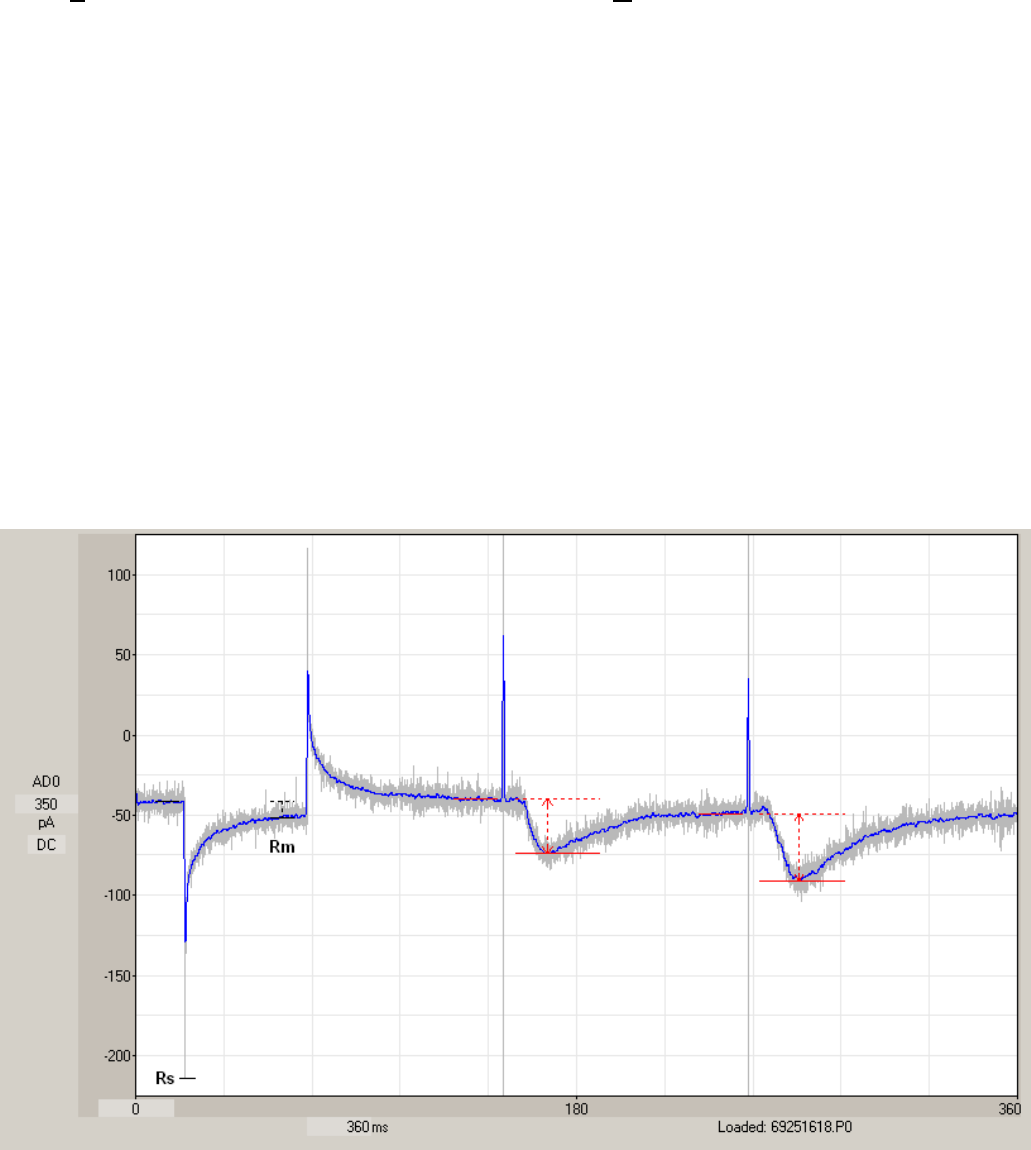User manual

110
Furthermore, Rs can now be measured from the Peak of the capacitative transient or with single or
double exponential curve fitting.irst, for Rs to be measured you have to :
1) set ADx DataType to pA (see Section 2.13.1)
2) set ICx to mV (see Section 4.8.1.)
3) have an RsRm step in sweep stimulation (see Section 4.9.1.)
Next, the method of determining how patch electrode series resistance (Rs) is calculated is chosen by
using the menu commands:
AmpFile -> Series and Input Resistance Calculation Methods...
to bring up the Series and Input Resistance Dialog Box (Fig. 4.11.11.1).
The first choice you have to make, using the Measure Rs and Rm from Normal or Unfiltered Trace
radiobuttons in Fig. 4.11.11.1, is whether to make Rs and Rm measurements from the Normal trace
which may or may not be internally low-pass digitally filtered, or the Unfiltered trace, which is always
unfiltered, and can be either a Raw or Averaged trace. The reason for this choice is that often
(particularly during online analysis) you want to low-pass filter the trace in order to measure Peak
Amplitude well, but you do not want to filter the peak capacitative transient in order to get good
Rs measurement.
Fig. 4.11.11.2 shows what I think is the best way of making Rs and PkAmp measurements online. The
Rs measurement made from the capacitative transient peak to a step voltage pulse from an Unfiltered
trace (using the Unfiltered trace selection) (see the ‘Rs’ black line on the negative transient peak of the
gray unfiltered trace), whereas the PkAmp measurement is made from the filtered trace with the digital
filtering turned on (see the red lines on the blue filtered trace).










